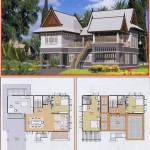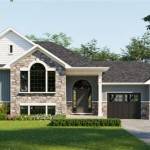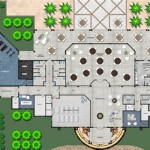Essential Aspects of Bali House Plans
Bali, with its enchanting landscapes and rich cultural heritage, has become a popular destination for those seeking a tranquil escape or a permanent residence. If you dream of building your own slice of paradise in Bali, it is crucial to consider the essential aspects of Bali house plans to ensure a harmonious living space that reflects the island's unique character.
1. Respect for Tradition and Harmony
Bali's architecture is deeply rooted in the region's traditions and beliefs. When designing a Bali house, it is important to respect these traditions by incorporating elements such as the alang-alang thatched roof, intricate carvings, and open pavilions. By blending modern amenities with traditional aesthetics, you can create a harmonious living space that honors the island's heritage.
2. Open-Plan Living and Outdoor Spaces
One of the hallmarks of Bali house plans is the emphasis on open-plan living and seamless integration of indoor and outdoor spaces. The use of sliding glass doors and wide terraces allows for natural light and ventilation to permeate the home. Outdoor living areas, such as a swimming pool, deck, or garden, extend the living space and provide opportunities for relaxation and entertaining.
3. Sustainable Design
Bali is known for its lush greenery and natural beauty. To preserve this pristine environment, it is essential to incorporate sustainable design principles into your Bali house plan. Consider using eco-friendly materials, such as bamboo, recycled wood, and solar panels. By embracing sustainable design, you can reduce your carbon footprint and live in harmony with nature.
4. Natural Materials and Craftsmanship
Bali's artisans are renowned for their exceptional craftsmanship. Bali house plans often incorporate natural materials, such as wood, stone, and textiles, which lend warmth and character to the home. Handcrafted details, such as carved wooden pillars and intricate tilework, add a touch of authenticity and showcase the island's skilled artisans.
5. Feng Shui and Natural Elements
The ancient Chinese art of Feng Shui plays a significant role in Bali house plans. By arranging the home's layout and design elements according to the principles of Feng Shui, you can create a harmonious and balanced living environment. Incorporating natural elements, such as water features, indoor plants, and natural light, is also believed to enhance the flow of positive energy.
6. Customization and Flexibility
Bali house plans offer a high degree of customization and flexibility to meet the unique needs of each homeowner. Whether you desire a traditional joglo-style home or a contemporary villa, architects can work with you to design a space that perfectly aligns with your vision and lifestyle. The flexible nature of Bali house plans allows for future expansions or modifications, ensuring that your home can adapt as your needs change.
7. Indoor-Outdoor Transition
Bali's tropical climate allows for a seamless indoor-outdoor transition. House plans often feature large windows, sliding doors, and covered terraces that effortlessly connect the interior and exterior spaces. This design concept not only creates a sense of openness but also allows for natural airflow and ventilation.

Bali Floor Plan House Modern Plans Design

Bali House Designs Floor Plans Tropical Design

Bali Tropical House Plans Create Your Dream Home In

From Bali With Love Tropical House Plans Design

Bali Tropical House Plans Create Your Dream Home In

2 Bedroom Bali House Plan B120ae Inhouseplans Com

Floorplans Laksmana Villas Seminyak Bali Private Of Distinction

Bamboo Floorplan Bali Villas Floor Plans Villa Plan House

Space At Bali Villa Layout

Balinese House Design And Spiritual Considerations








